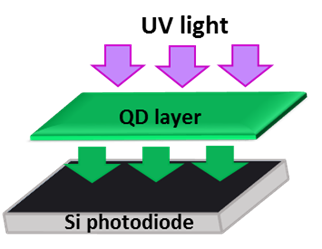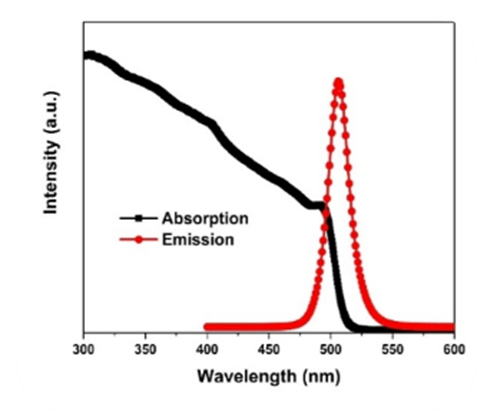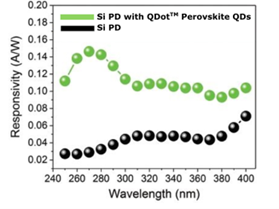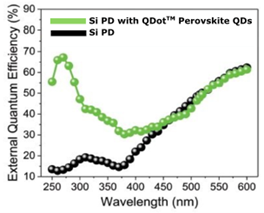QDot™ materials for UV Sensors
Silicon photodiode is the most widely used commercial photodetector for a broad range of applications, from imaging to light sensors. Unfortunately, it has low responsivity and struggles to capture photons in the UV light range (< 400 nm), due to the low penetration depth of high energy UV photons into silicon-based materials. QDot™ Perovskite Quantum Dots can be utilised as a colour-converting layer to enhance the UV light sensitivity of Si-based photodetectors.
Benefits of using QDot™ Perovskite Quantum Dots for UV sensors:
- High photo-conversion of UV light into visible light (PLQY up to 100 %)
- High absorption coefficient of UV light
- Tunable emission 410-685 nm


|
Parameter
|
Typical value
|
|---|---|
|
QDs peak emission
|
Tuneable 410-685 nm
|
|
PLQY at UV light excitation
|
Up to 100 %
|
|
UV light absorption range
|
100-400 nm
|
|
PL decay time (372 nm)
|
4.5 ns
|
|
Responsivity improvement of Si-PD with QDot™ Perovskite QDs
|
100 – 1000 times
|
DEVICE EXAMPLE:
QDot™ Perovskite QDs can convert UV light into lower energy green light where Si-based photodetectors have a high sensitivity. QDot™ Perovskite QDs ABX3-510 can be used in the form of QDs in a polymer film or a spin coated layer on top of the Si-based photodetector.
By utilising only a very thin layer of QDot™ Perovskite QDs on top of Si-based photodetector, the responsivity of the devices increases in response to UV light, without sacrificing the response to the visible light.



